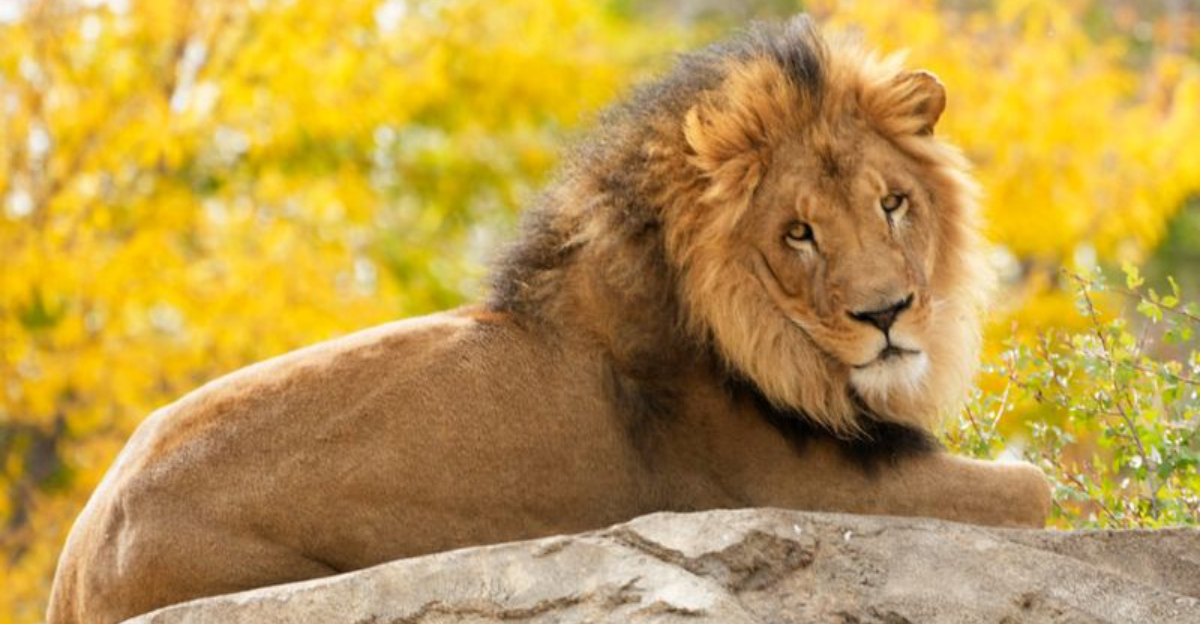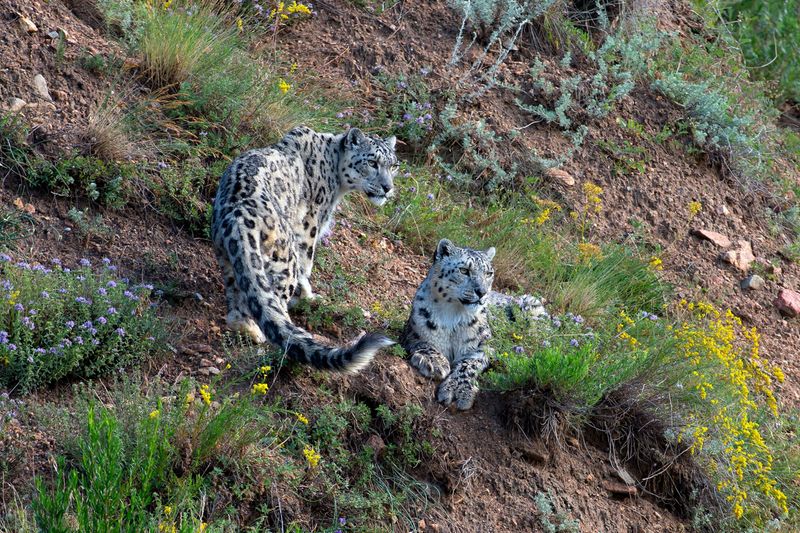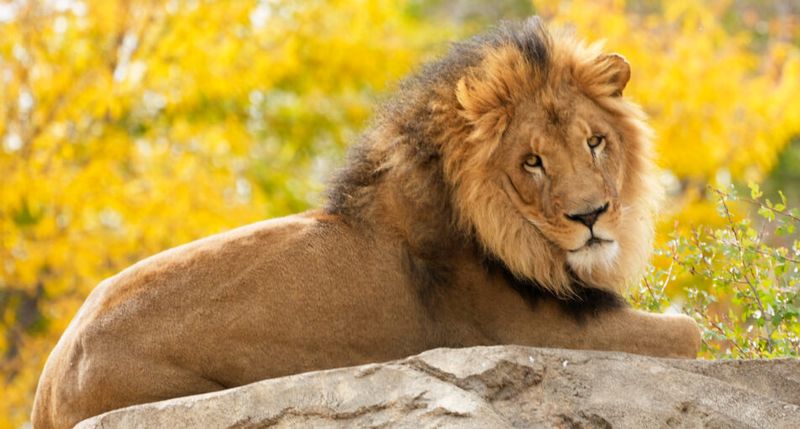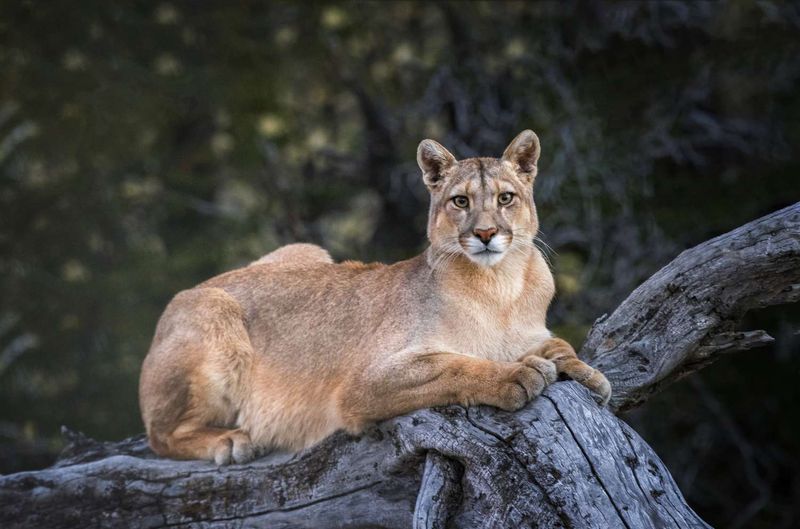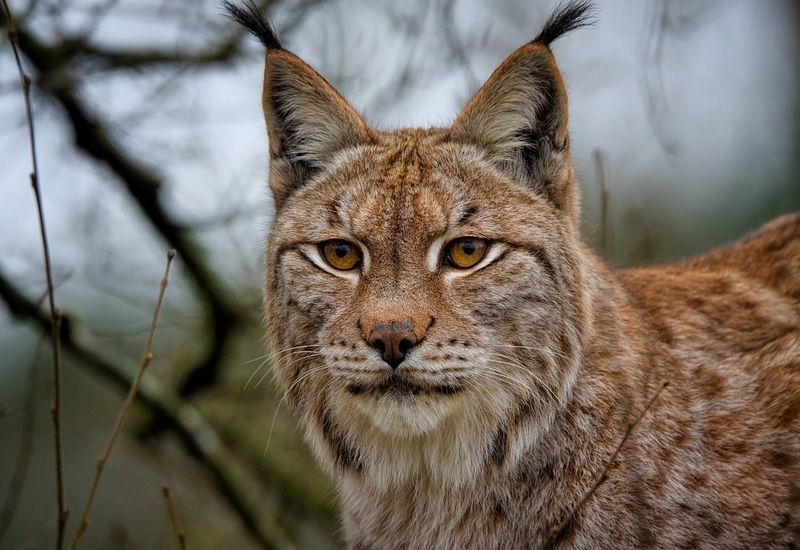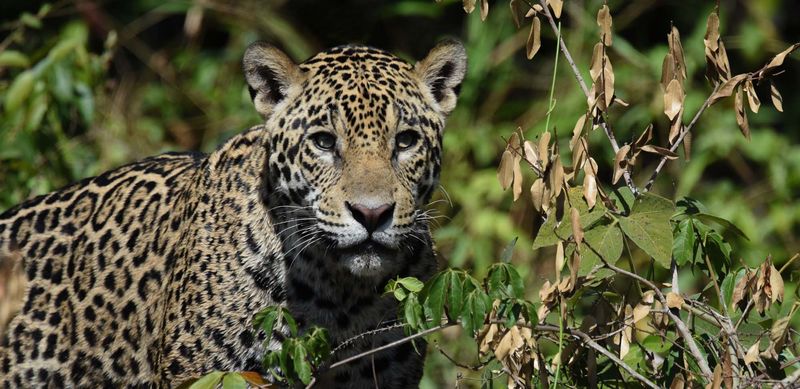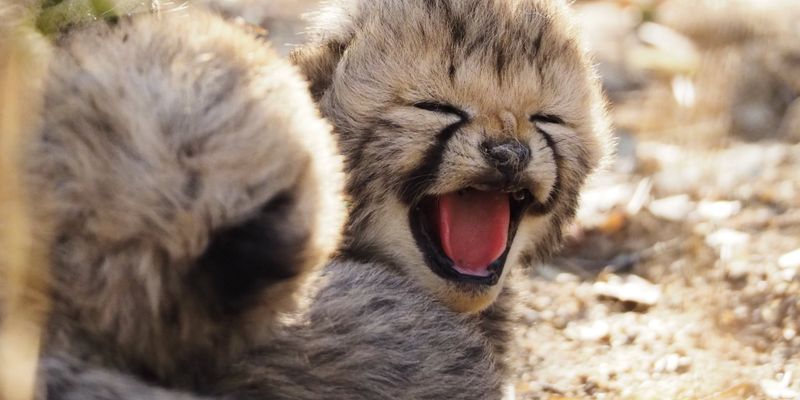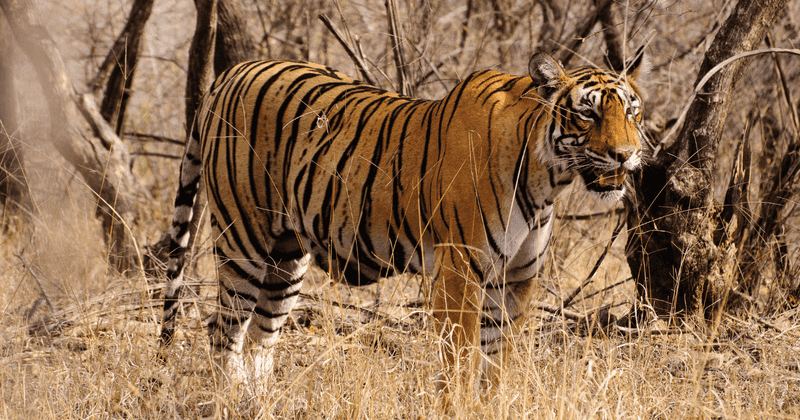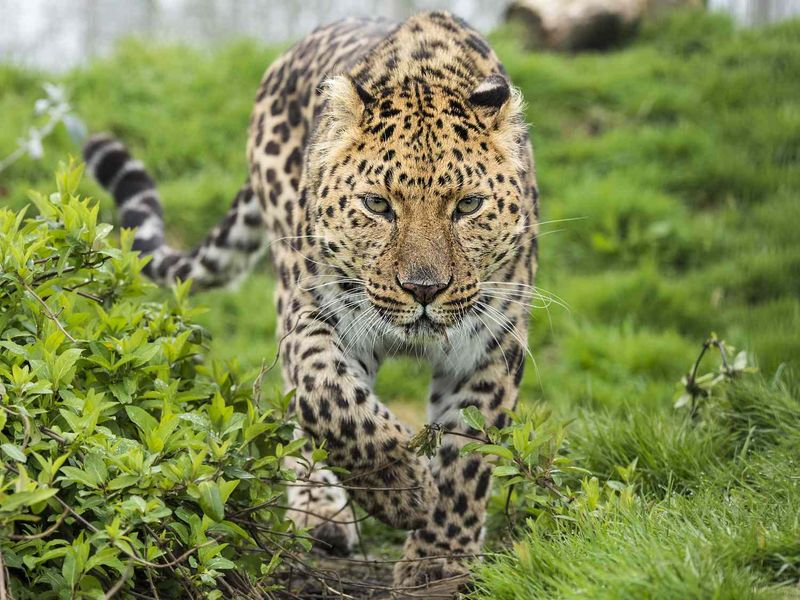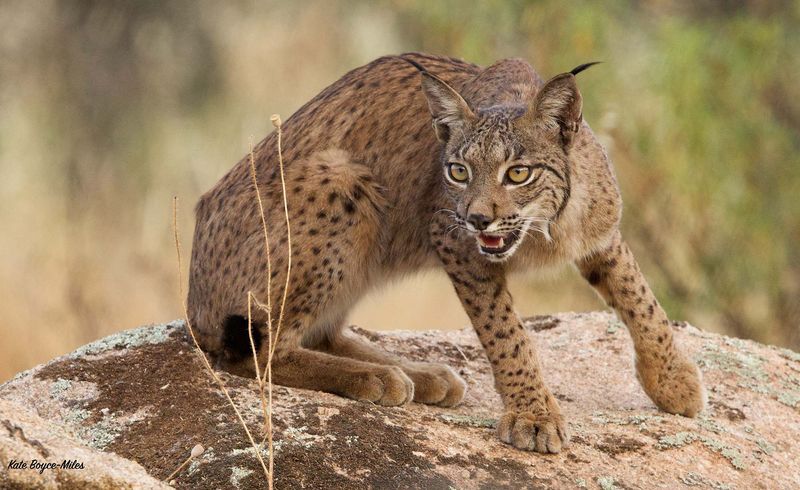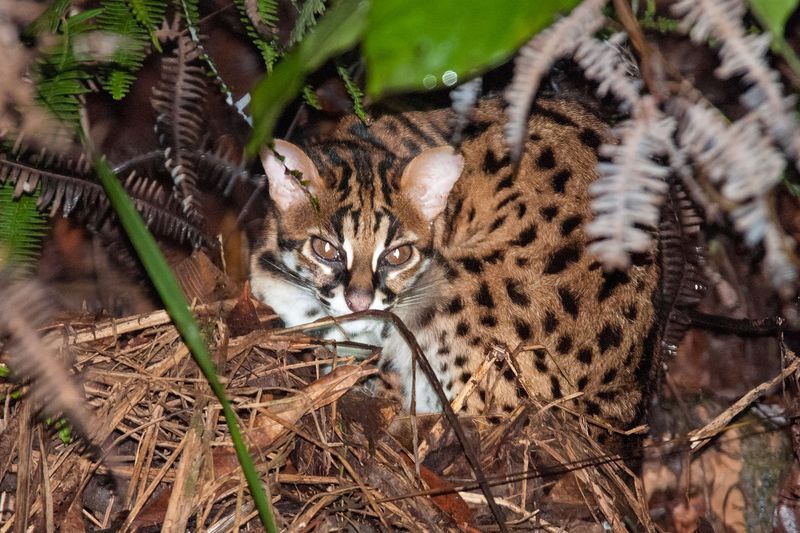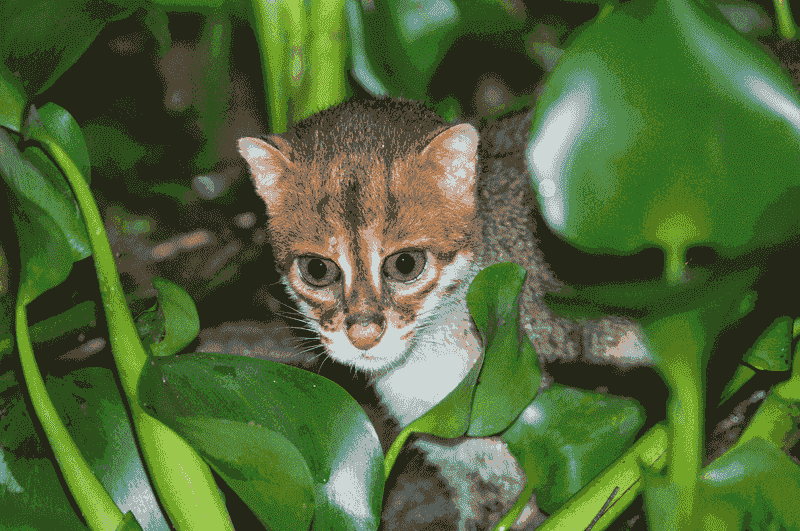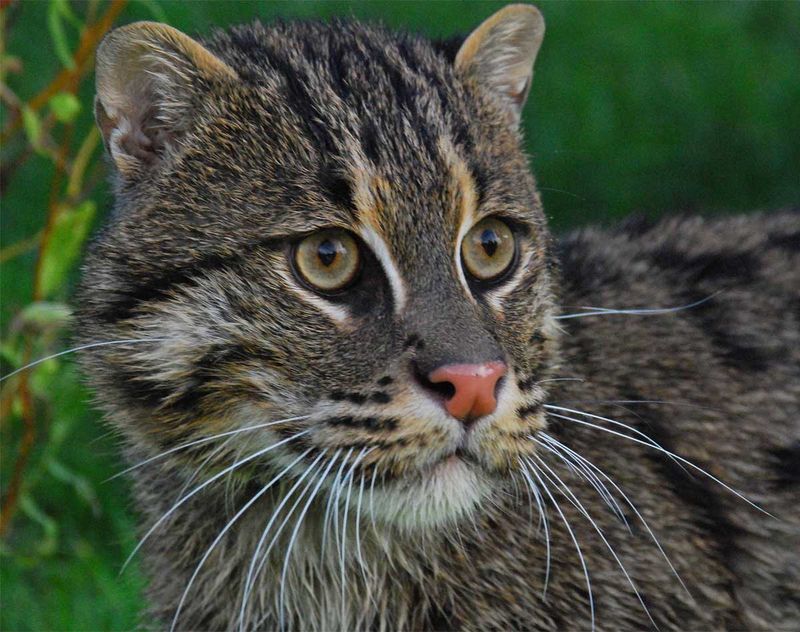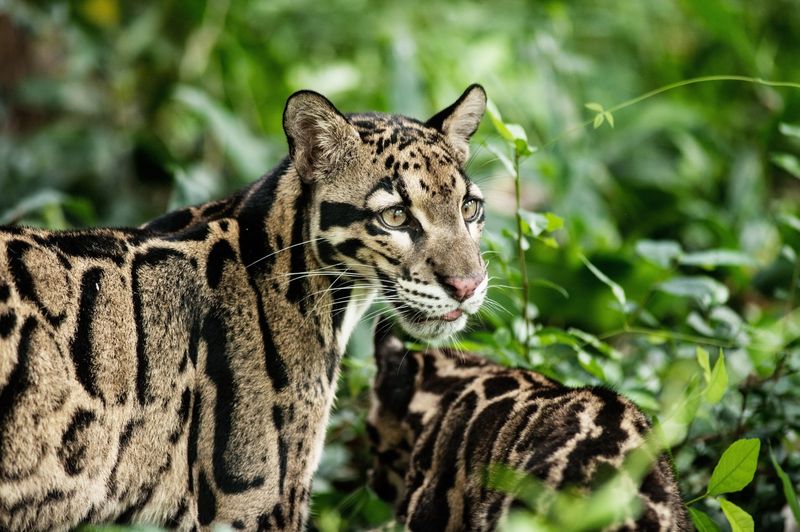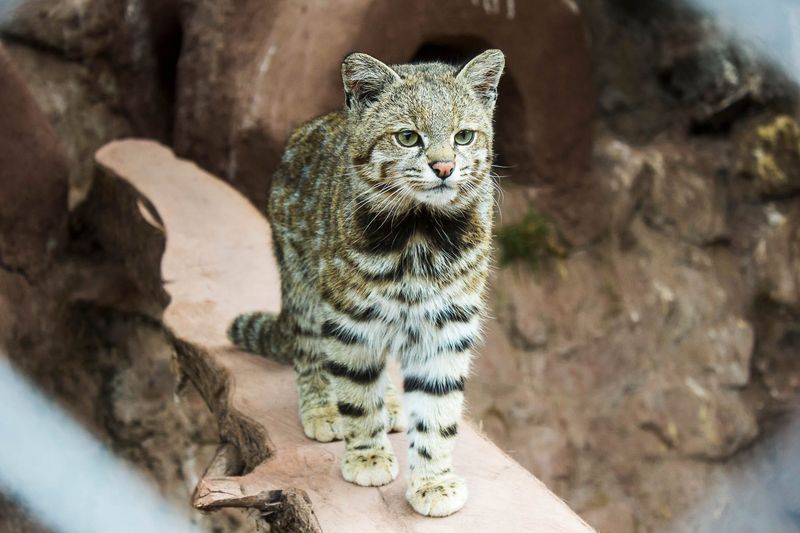📖 Table of Content:
Big cats around the world face unprecedented threats from habitat loss, poaching, and climate change. These magnificent predators play crucial roles in their ecosystems, keeping prey populations in check and maintaining nature’s delicate balance. While some species have stable populations that conservation efforts can strengthen, others teeter dangerously close to extinction with dwindling numbers that may never recover.
1. Snow Leopard
High in the mountains of Central Asia, snow leopards prowl through rugged terrain with their thick fur and powerful limbs. These elusive cats have adapted perfectly to harsh alpine environments where few other predators can survive.
Conservation efforts have helped stabilize their population in recent years. Protected areas in countries like Mongolia and Kyrgyzstan give these cats safe spaces to hunt and raise their young.
With continued international cooperation and local community involvement, snow leopards have a fighting chance. Their numbers still hover around 4,000-6,500 in the wild, but dedicated conservation programs are making real progress in securing their future.
2. African Lion
African lions once roamed across most of the continent, but today they occupy just 8% of their historic range. Despite this dramatic decline, conservation areas in eastern and southern Africa provide strongholds where these magnificent cats can thrive.
Community-based conservation models have proven effective in countries like Kenya and Tanzania. When local people benefit from lion tourism, they become powerful allies in protecting these predators.
Lion numbers have stabilized in well-managed reserves and national parks. With continued protection of habitat corridors and anti-poaching efforts, lions can maintain healthy populations across their remaining range, currently estimated at 20,000 wild individuals.
3. Puma
Also known as mountain lions or cougars, pumas have the largest range of any wild land mammal in the Americas. From Canadian forests to the southern Andes, these adaptable cats survive in diverse habitats and climates.
Pumas have made remarkable comebacks in places like California and Florida after decades of persecution. Their ability to live near human settlements without being detected demonstrates their remarkable adaptability.
Conservation success for pumas depends on protecting wildlife corridors that allow them to move between habitat patches. With proper management of deer populations (their primary prey) and reduced conflicts with livestock owners, pumas can continue to thrive across their extensive range.
4. Eurasian Lynx
The Eurasian lynx has staged an impressive recovery across parts of Europe in recent decades. After being driven to extinction in many western European countries, reintroduction programs have helped these tufted-eared cats reclaim their former territories.
Forest conservation and wildlife protection laws have created favorable conditions for lynx expansion. Countries like Switzerland, France, and Germany now host growing populations of these medium-sized cats.
Rural communities are learning to coexist with lynx through education programs and compensation schemes for occasional livestock losses. With continued habitat protection and public support, Eurasian lynx populations can continue their remarkable recovery across the continent.
5. Jaguar
Jaguars reign as the largest cats in the Americas, with their powerful jaws capable of crushing turtle shells and caiman skulls. These spotted predators once ranged from the southwestern United States to Argentina, but have lost nearly half their historic territory.
Conservation corridors like the Jaguar Corridor Initiative aim to connect isolated populations across Central and South America. Protected areas in the Amazon and Pantanal wetlands serve as crucial strongholds for healthy jaguar populations.
Ecotourism initiatives have turned jaguars into valuable economic assets for local communities. When properly managed, this creates financial incentives to protect rather than persecute these magnificent cats, giving them a realistic chance for long-term survival.
6. Cheetah
The world’s fastest land animal faces serious challenges but has promising conservation programs working in its favor. Cheetahs have disappeared from 91% of their historic range, yet dedicated reserves in eastern and southern Africa provide safe havens.
Innovative conservation approaches include working with farmers to use guard dogs that protect livestock from cheetahs. This reduces retaliatory killings while allowing cheetahs to live alongside human communities.
Captive breeding programs maintain genetic diversity and could potentially support wild population recovery. With approximately 7,000 cheetahs remaining in the wild, their future depends on expanding protected habitat networks and reducing human-wildlife conflict across their range.
7. Tiger
Tigers have become a global conservation priority, with their numbers slowly increasing after decades of decline. India leads the way in tiger recovery, with its population nearly doubling since 2006 thanks to strict protection measures and expanded reserves.
Nepal and Russia have also seen tiger numbers rise in recent years. Anti-poaching patrols, habitat restoration, and wildlife corridors have all contributed to these conservation successes.
The global wild tiger population now stands at approximately 4,500 individuals. While still endangered, their trajectory has shifted from rapid decline toward gradual recovery in key range countries, demonstrating that dedicated conservation efforts can bring even the most iconic endangered species back from the brink.
1. Amur Leopard
Fewer than 100 Amur leopards remain in the wild, making them the world’s most endangered big cat. These rare cats survive only in a small area along the Russia-China border, where harsh winters and human persecution have pushed them to the edge of extinction.
Habitat fragmentation separates breeding populations, leading to dangerous inbreeding. Despite protected status, poaching for their beautiful spotted coats continues to threaten their survival.
Conservation efforts face enormous challenges, including political tensions between range countries. Without dramatic intervention, including possible captive breeding and reintroduction programs, the Amur leopard may become the first big cat to disappear forever in the modern era.
2. Iberian Lynx
Once widespread across Spain and Portugal, Iberian lynx numbers crashed to fewer than 100 individuals by 2002. Despite intensive conservation efforts that have increased their population to around 400, they remain perilously close to extinction.
Climate change threatens the Mediterranean scrubland these lynx depend on. Rising temperatures and changing rainfall patterns could destroy their habitat faster than conservation programs can respond.
Disease outbreaks in rabbit populations—their primary prey—have repeatedly devastated lynx food sources. Even with captive breeding and reintroduction programs showing some success, the long-term survival of this distinctive species with its beard-like facial ruffs remains highly uncertain.
3. Borneo Bay Cat
The mysterious Borneo bay cat ranks among the least-known felines on Earth. First described scientifically in 1874, this small rusty-red cat has been photographed in the wild only a handful of times, making conservation nearly impossible.
Deforestation for palm oil plantations destroys their habitat at an alarming rate. Borneo has lost over 50% of its forests, leaving these rare cats with increasingly fragmented territory.
Scientists know almost nothing about their behavior, breeding, or ecological needs. Without this basic information, creating effective conservation plans remains extremely difficult. The species may disappear before researchers even understand its role in Borneo’s ecosystem.
4. Flat-headed Cat
Wetland destruction threatens the specialized flat-headed cat across Southeast Asia. These unusual felines have partially webbed feet and forward-facing eyes adapted for catching fish and crustaceans in shallow water.
Their wetland habitats disappear rapidly due to drainage for agriculture and urban development. Palm oil plantations have replaced much of their native habitat in Malaysia and Indonesia.
Scientists estimate fewer than 2,500 mature individuals remain in the wild. Climate change may deliver the final blow, as rising sea levels could flood coastal habitats while drought affects inland wetlands. Without immediate protection of remaining wetland areas, these specialized cats face almost certain extinction.
5. Fishing Cat
Fishing cats depend on healthy wetlands across South and Southeast Asia. These medium-sized cats readily dive into water to catch fish, with water-resistant fur and partially webbed feet specially adapted for their aquatic lifestyle.
Wetland drainage for agriculture and aquaculture has destroyed much of their habitat. In countries like Vietnam and Java, they may already be functionally extinct.
Pollution from agricultural runoff and industrial waste poisons the waterways these cats depend on. Even in protected areas, water quality issues threaten both the cats and their prey. Without comprehensive wetland protection and restoration across their range, fishing cats will likely disappear from most of their historic territory.
6. Clouded Leopard
Clouded leopards possess the longest canine teeth relative to skull size of any living cat. These remarkable predators inhabit Southeast Asian forests, where their short legs and flexible ankles allow them to climb headfirst down tree trunks.
Massive deforestation across their range destroys their forest canopy habitat daily. Commercial logging, palm oil plantations, and road development fragment the forests these cats need to survive.
Poaching for their beautiful coats and bones threatens remaining populations. Their teeth and claws also fetch high prices in illegal wildlife markets. With habitat loss accelerating and protected areas inadequately enforced, clouded leopards face a bleak future without dramatic conservation intervention.
7. Andean Mountain Cat
Few people have ever seen an Andean mountain cat in the wild. These small, thick-furred felines live only in remote high-altitude regions of the Andes Mountains above 3,000 meters, where they hunt chinchillas and viscachas among rocky outcrops.
Mining operations increasingly penetrate their remote habitat, bringing pollution and habitat destruction. Climate change threatens to shrink their high-altitude environment as warmer temperatures push ecosystems upslope.
Traditional beliefs in some communities lead to these cats being killed and preserved as good luck charms. With perhaps fewer than 1,400 adults remaining across Peru, Bolivia, Chile, and Argentina, and almost no protected areas specifically designed for their conservation, the future looks grim for these specialized mountain dwellers.
